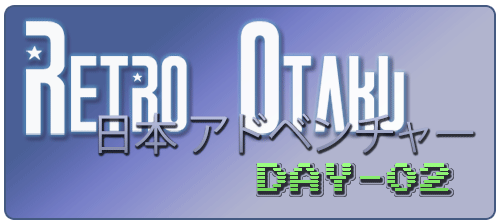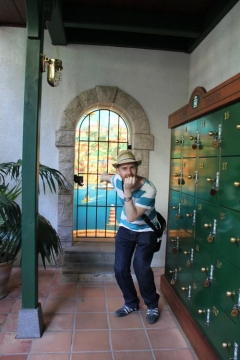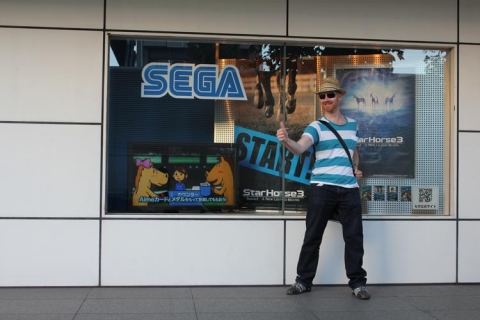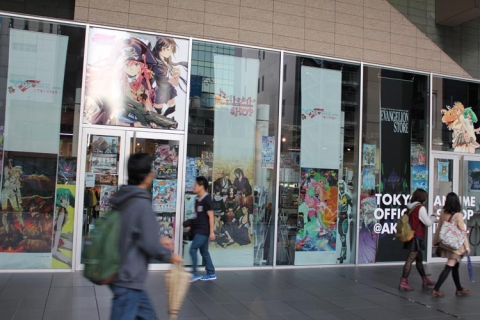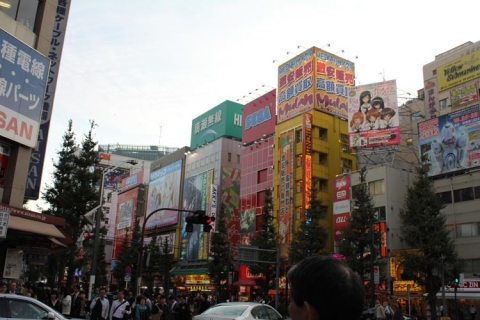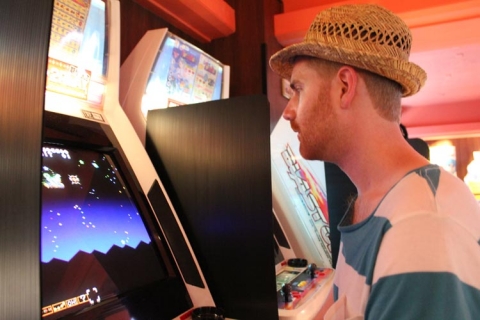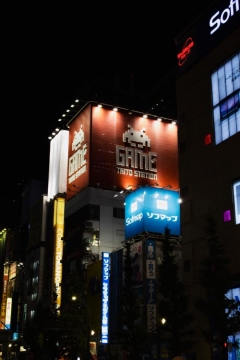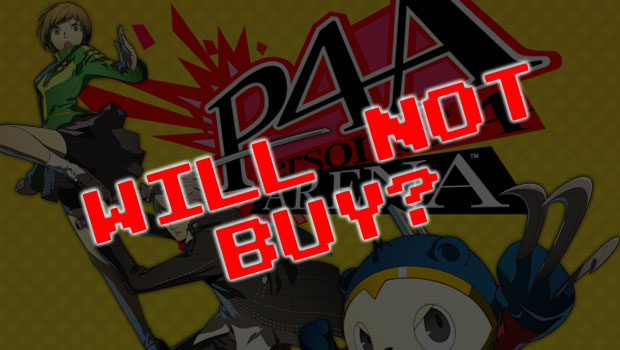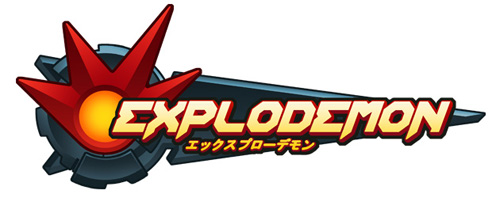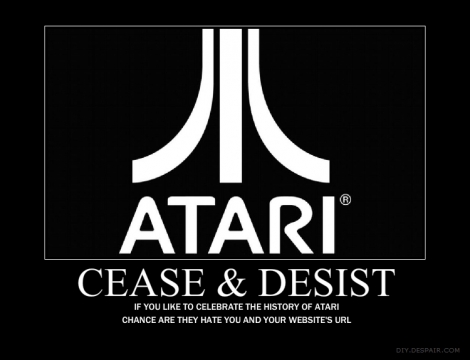Posted Tuesday, 3rd April 2012 under Soapbox rants
9 Comments »
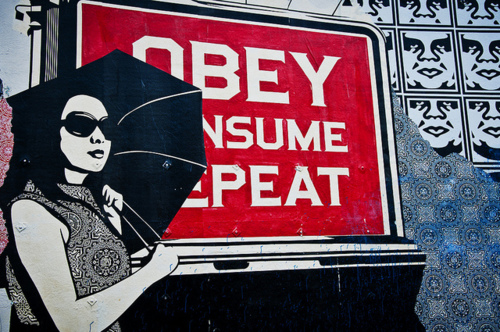
Be warned, this is going to be a very lengthy post.
I’ve been thinking of writing this for a while now, but the latest from Kotaku has encouraged me to get onto it.
Today’s soapbox rant is on the emerging anti-consumer mentality becoming prevalent amongst publishers and some developers. The general consensus is about clamping down on second-hand sales as it has a direct effect on sales of new titles. The practice is spurned by game retailers selling second-hand games alongside new games for a fraction of the discount compared to the cost of the new title. This means within a week of the latest blockbuster coming out, in addition to the RRP$120 brand new copies, there will be second-hand copies for $10-$20 less; to the average consumer, the second-hand copy is fine for their purpose and they pick up the cheaper game. This flows more money into the retailer (as the margin on the second-hand game sale is significantly higher compared to the brand new retail copy), leaves extra spending money for the consumer, but it means the publisher has missed out on a sale, and lack of sales at retail equal less money going back to the publisher and in turn to the developer.
The angst from the publishers and developers makes sense, especially if you look at the short-term economic impact. New titles only have a finite shelf-life, and they need to maximise the first few weeks to bring a decent ROI for the publisher. If this is compromised by retailers selling second-hand games with a higher margin to a consumer that’s happy to save a few bucks, the situation gets worse as sales of new titles plummet.
Thus, from the publisher, their issue is that retailers are “double-dipping” the game sales, having made money on the sale of the new game, then making another sale with a considerably more healthy margin on the second sale. Publishers need capital return in order to invest in funding new games from their developers, so if the ROI is affected, it in turn affects the amount of time/resourcing allocated to new games development.
The next portion of the equation is the retailer. Their issue is to be profitable in order to satisfy their investors, pay their rent and pay their staff; these are all common issues to publishers as well, including the final part of the equation in maximising their short-medium term return on investment. In order to achieve this, they need to look at their business and maximise revenue. For years now dedicated game retailers have complained that the margins on new game sales are incredibly slim, so the paradigm has changed to reflect the market – accessories and auxillary merchandise (premium editions, guides, figurines, etc) assist with diversifying their income due to the higher retail margins, not unlike how the sale of cables, extended warranties and powerboards boost the margins for home electronics dealers. Used games are a natural extension of this, as they allow a higher margin at retail and therefore make the running of a dedicated store a sustainable venture, to the point where used game sales are to a large degree propping up the retail model due to the poor margin of new game sales.
The final slice of the pie is arguably the most important one – the consumer. To the average consumer, as long as the game works, there’s no issue – they just want to play it. For the enthusiast, purchasing habits can often be a little more pragmatic, with an emphasis on purchasing brand new copies. Where money is an issue (very important to the average consumer), the purchase of a used game makes sense; conversely, it is also equally important to have the ability to trade in used games and use that credit to purchase new titles as part of a consumer-product lifecycle.
This last point is often cited as a key part of keeping used game sales alive, as the habits of many consumers suggest that games are traded in for credit used to purchase new titles. By extension, it also reduces the risk of purchasing a new game as it allows the consumer to return the product for credit if they don’t like the game and use that credit to purchase another game they may enjoy more.
As a final extension to this model, there is also the preservation side to gaming. At the moment, I can load up a game that is over 30 years old on my Atari 2600 and play it. One may question the logic in doing such an activity, but it’s an important fact to consider. By extension, used games allow for people to enjoy retro games and is good for for the long-term health of gaming as an accessible social history. If you remove the ability to play used games, you effectively destory the ability to experience and partake in gaming from a socially historic perspective.
From a pragmatic business perspective though, this final argument holds absolutely no weight at all, particularly from a short to medium term perspective. This is because it gives the publisher the ability to strictly control the game’s usage patterns, and by extension, purchasing patterns. Control equates to an ability to extract maximum income from a past venture. This is part of the reason publishers hate the growth of emulation, as it allows intellectual property to be preserved and played without taking into account an additional revenue stream. Thus, the publisher has no interest in the social history of gaming and its contribution to society when viewed from an historical or anthropological perspective.
But there’s a counter-argument to this, which suggests that the birth of emulation has also given way to an acceptance of retro games as a pursuit of leisure and products worth revisiting or re-purchasing. It’s all very chicken/egg, with one side claiming the ease and portability of emulation gave legitmiate market interest in facilities like Nintendo’s Virtual Console; conversely, publishers would argue that the interest was always there, and the presence of free emulation undermines the value of old games.
Things get muddier when you think about how the developers of the emulators themselves are tied up in the situation, with open-source emulation projects inherently contributing to commercially-emulated titles or closed-source emulation authors being hired to create commercial emulation software. There’s also the issue of quality – where freely available emulation has proved superior to commercial emulation, the core gaming community’s desire for comprable (and ideally superior) commercial emulation has lifted the quality of the product. Thus, it could be argued that the improvements in free emulation has in turn contributed to superior commercial emulation, which results in a superior product for the consumer.
Still with me? Good, so to recap, here’s where we’re at:
Publishers want maximum return from their investment and a cut of all sales relating to the sale(s) of games. Their motive is extracting maximum income from the sale of games, and their lack of a cut in the sale of used games undermines their business model. Their emphasis is on short-medium term gains, and to leverage their reputation to create long-term equity in their brand.
Retailers want to maximise their income stream to remain sustainable and profitable. This means making up for low margins on new games by selling items with higher margins (such as used games). They are focused on short-term returns and long-term sustainability of their business.
Consumers want a comprable experience for the best price possible. Consumers should be able to enjoy official (i.e. not bootleg) games for the life of the physical item, even if that means being able to play them in years to come. Consumers have demonstrated an interest in re-purchasing old games on newer systems if the price is right, the quality is in line with a commercial product and the content/setup is accessible and logical.
This then means that, in an ideal scenario, the publisher sells more titles to generate more money, retailers have a higher margin and higher sales to return more money into the store/franchise and consumers purchase games for a cheaper cost.
Something accordingly has to give.
One solution offered is to reduce the RRP on games and allow retailers to retain a higher margin; the crux of this argument is that the lower price will make the purchase of new titles more accessible to consumers and the volume of sales will offset the reduced income per item received by the publisher (economics 101 – sell more at a cheaper price and use volume to sustain your income projections).
The issue with this model is that, should game retailers continue to sell used games, then the consumer habits won’t change and the net result is that publishers will be generating less revenue per capita from sales, retailers will be making higher margins on new sales whilst retaining higher margins on used games and consumers won’t be prepared to pay a premium for their games.
The logical extension is to come to an agreement with retailers to either stop the sale of used game entirely (unlikely), or to add a window of exclusivity so that new titles have a period of time where used games will not be accepted as trade-ins or sold. The issue this would hold with retailers is that if they were to follow in this stead, would the margins from the new game sales be enough to make their businesses sustainable?
For the consumer, they ultimately want to purchase the game at the cheapest price; if games are cheaper, it either means less money in the budget to buy and play new games. A more ambitious outcome would be that gaming budgets remained the same or increased slightly, with the consumer using the same amount of money to purchase more games than before. This equals more sales for gaming, which in turn improves the sustainability of the business.
But it’s a risky move, and in an industry that has severely contracted over the last 5-10 years and has become decidedly risk-adverse, this is not an enticing move.
So, with all parties at a standstill, the break to the stalemate has been to slowly introduce anti-consumer strategies to bully consumers and control their purchasing habits. There are degrees of impact with this strategy, including region-locking consoles (a historical approach to price fixing in the gaming sector), restricting additional online content via a serial key (available free as a one-off use with the game and available for purchase as DLC thereafter), requiring an always-on internet connection to play (including playing single-player) or inherently altering the physical media to not allow for the game to be “factory reset” for a new user.
The news from Kotaku (at the top of this rant) suggests that Sony are looking at going down an extremely anti-consumer path of creating individual keys embedded in the media or printed/inserted with the product that requires the consumer to lock a title directly to their online account. Without the key, the game is stuck in “trial mode”, with the consumer required to pay an additional fee to play the game in its entirety. I can see the logic of locking down the online/multiplayer experience like this, but for single-player or offline games it’s definitely an example of strong-arm contracts.
While this may seem achievable (if mean-spirited), these anti-consumer methods are inherently flawed as it fails to take into practice of playing these games when the servers are ultimately switched off, if there was a misprint with your key or if you have issues with your internet connection in the immediate-term. Pragmatically, the publisher has no issue with this, as you’ve paid your money for the game, and in the instances where live server connections are required for play, it allows them to re-release the title on succeeding platforms and maximise their investment in the title by shutting down any access to the content outside of their rules. It invariably moves console gaming into the same realm as PC gaming, and we’ve all seen how successful strong-arm tactics in the PC gaming arena has been.
Now, all of this assumes that the rights-holders actually stay around though in order to support or re-release their titles – anyone who has read up or been involved with managing rights for old games in order to redistribute them commercially knows its a minefield that can often make it financially unviable. This means for the purpose of short-term profit, an entire generation (and future generations) of social gaming history will be lost owing purely to control and corporate greed.
But this fails to take into consideration the importance of second hand games, their financial accessibility and how these tie into brand equity for the long-term sustainability of the gaming sector.
After all, how many kids played second-hand or emulated Sonic titles in years past, all of which have contributed to the enourmous brand equity in the Sonic franchise to date?
From a personal perspective, when I was a kid we had a collection of new and second-hand games for our consoles – as I was in primary or high school depending on the system, and had limited sources of income, this was how it was; you also borrowed games between friends or took them over peoples’ places for gaming as a group. Where possible, I was lucky enough to have some new titles, and alongside those were a number of second-hand games.
Fast-forward to where I am now, and over the three current generation systems in our household, the collection sits well beyond double-figures, and almost every one was purchased brand new at retail.
If I didn’t have the option of supplanting my gaming habits when I was a kid with second-hand titles, I daresay I wouldn’t be the avid gamer I am today. Sure, it doesn’t make much sense financially short-term, but long term? Those numbers speak for themselves. That’s what makes this industry sustainable long-term.
Going beyond purchase habits, there’s also the topic of harm-minimisation, something I’ve talked about before. If the leaked details are anything to go by, antagonising consumers will do very little to reduce the likelihood of console hardware (and related networks) being compromised in order to attain extended functionality that should have been present day one or play pirated titles (or being able to play legitimate titles offline if the above is any indication); it also raises the question of compromising the network as an act of rebellion or to improve the consumer experience. As before, I’m not endorsing these actions, I’m merely pointing it out as a likely act that may follow in the wake of antagonistic behaviour.
This kind of heavy-handed behaviour also adds fuel to the fire of those wishing to preserve the social history of gaming – under the leaked conditions, this means that once the servers are switched off, none of those games will be accessible. Even if you purchased it at retail but hadn’t opened the seal until the servers had been turned off (granted this is unlikely, though having picked up a brand new 32X in 2011, I don’t think it’s out of the question), the game will not be active.
Therefore in order to preserve the next generation of games, you will need to pirate the software.
This suggests a very short-sighted and flawed approach to the gaming paradigm, and one that is actively setting up the next generation of gaming to be extremely problematic.
Despite all the above being said, I obviously don’t have the answer – after all, I’m a nerdy retro gamer running a small, independent blog where I wax lyrical without any editorial panache.
But I’m also a passionate gamer, and it seems incredibly daft to return to a mindset from several decades ago in order to maximise profits in a way that is antagonistic to your consumers and focused incredibly tightly on short-term cashflow vs a long-term relationship built on respect, progressive attitudes and cashflow.
For me, I think the solution is to meet the retailers part of the way and addressing the needs of the consumer. This means reducing the retail price and working on volume sales whilst increasing the margin for retailers, coming to an agreement with retailers to manage second-hand games in a way that is acceptable to all parties and practicing harm-minimisation by being progressive towards your consumers (e.g. region-free, extensible features, user-serviceable HDDs, etc).
The industry learned some hard lessons this generation, let’s not see all that hard work go to waste with what’s to come.
